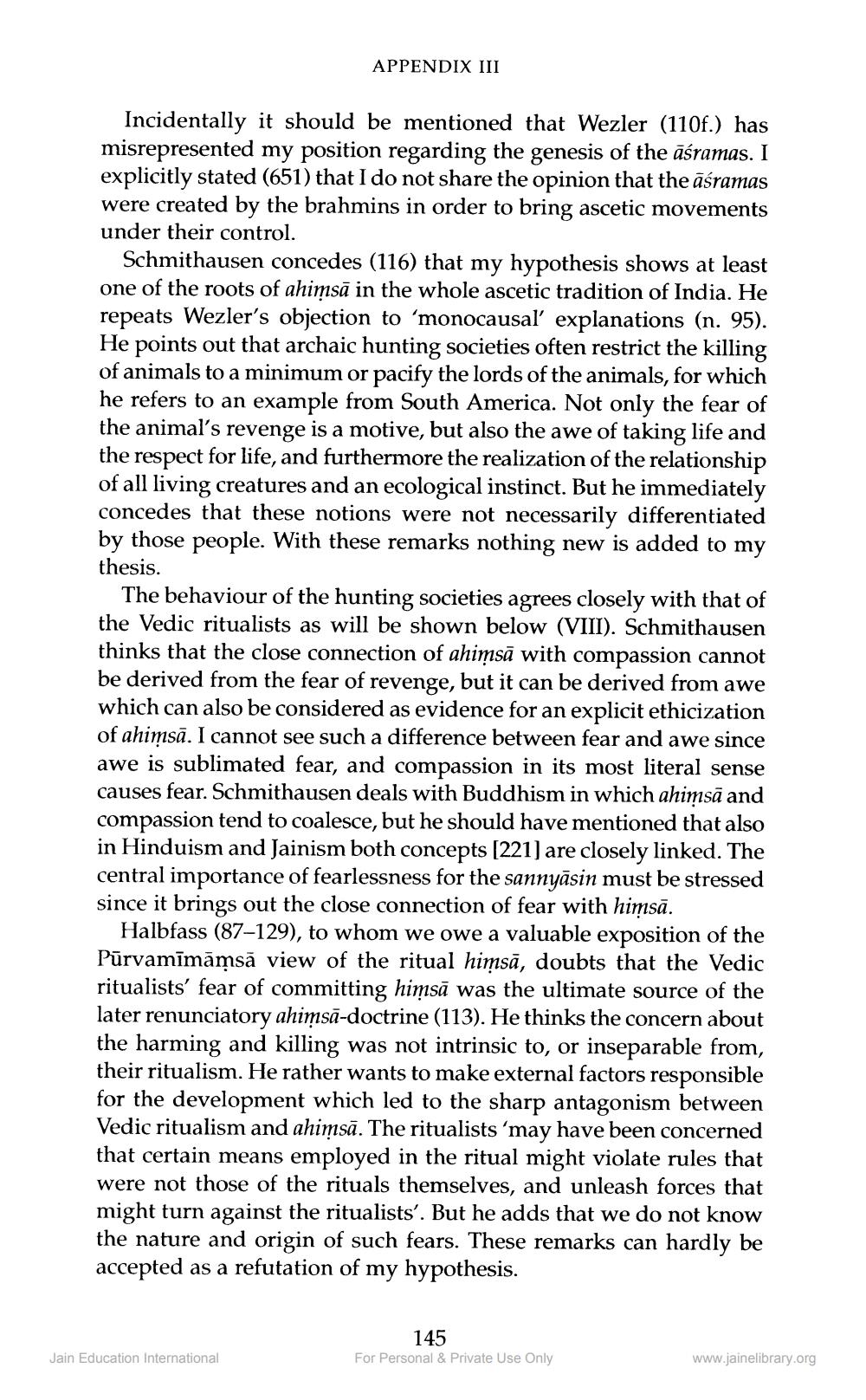________________
APPENDIX III
Incidentally it should be mentioned that Wezler (110f.) has misrepresented my position regarding the genesis of the āśramas. I explicitly stated (651) that I do not share the opinion that the āśramas were created by the brahmins in order to bring ascetic movements under their control.
Schmithausen concedes (116) that my hypothesis shows at least one of the roots of ahimsā in the whole ascetic tradition of India. He repeats Wezler's objection to 'monocausal explanations (n. 95). He points out that archaic hunting societies often restrict the killing of animals to a minimum or pacify the lords of the animals, for which he refers to an example from South America. Not only the fear of the animal's revenge is a motive, but also the awe of taking life and the respect for life, and furthermore the realization of the relationship of all living creatures and an ecological instinct. But he immediately concedes that these notions were not necessarily differentiated by those people. With these remarks nothing new is added to my thesis.
The behaviour of the hunting societies agrees closely with that of the Vedic ritualists as will be shown below (VIII). Schmithausen thinks that the close connection of ahimsā with compassion cannot be derived from the fear of revenge, but it can be derived from awe which can also be considered as evidence for an explicit ethicization of ahimsā. I cannot see such a difference between fear and awe since awe is sublimated fear, and compassion in its most literal sense causes fear. Schmithausen deals with Buddhism in which ahimsā and compassion tend to coalesce, but he should have mentioned that also in Hinduism and Jainism both concepts [221] are closely linked. The central importance of fearlessness for the sannyāsin must be stressed since it brings out the close connection of fear with himsā.
Halbfass (87–129), to whom we owe a valuable exposition of the Pūrvamīmāmsā view of the ritual himsā, doubts that the Vedic ritualists' fear of committing himsā was the ultimate source of the later renunciatory ahimsa-doctrine (113). He thinks the concern about the harming and killing was not intrinsic to, or inseparable from, their ritualism. He rather wants to make external factors responsible for the development which led to the sharp antagonism between Vedic ritualism and ahimsā. The ritualists 'may have been concerned that certain means employed in the ritual might violate rules that were not those of the rituals themselves, and unleash forces that might turn against the ritualists'. But he adds that we do not know the nature and origin of such fears. These remarks can hardly be accepted as a refutation of my hypothesis.
145 For Personal & Private Use Only
Jain Education International
www.jainelibrary.org




